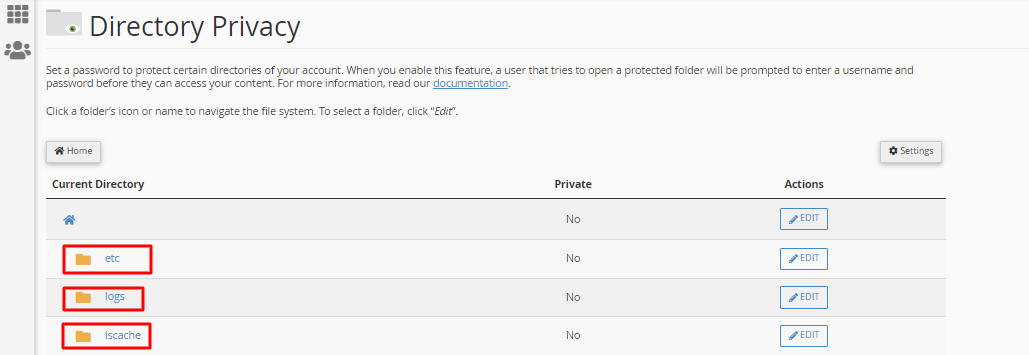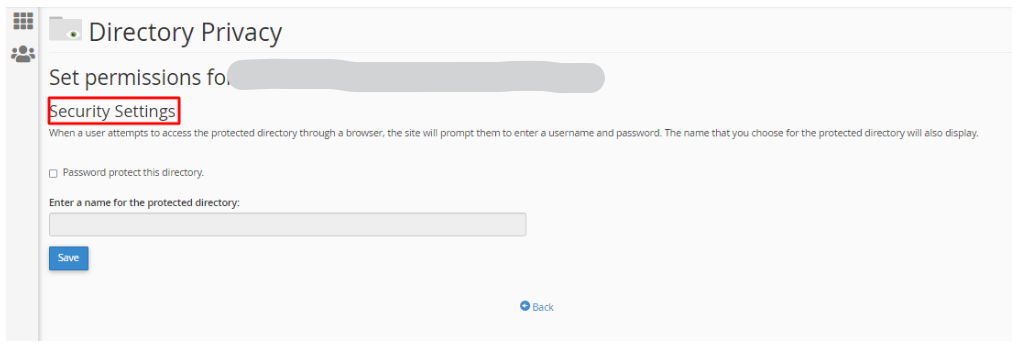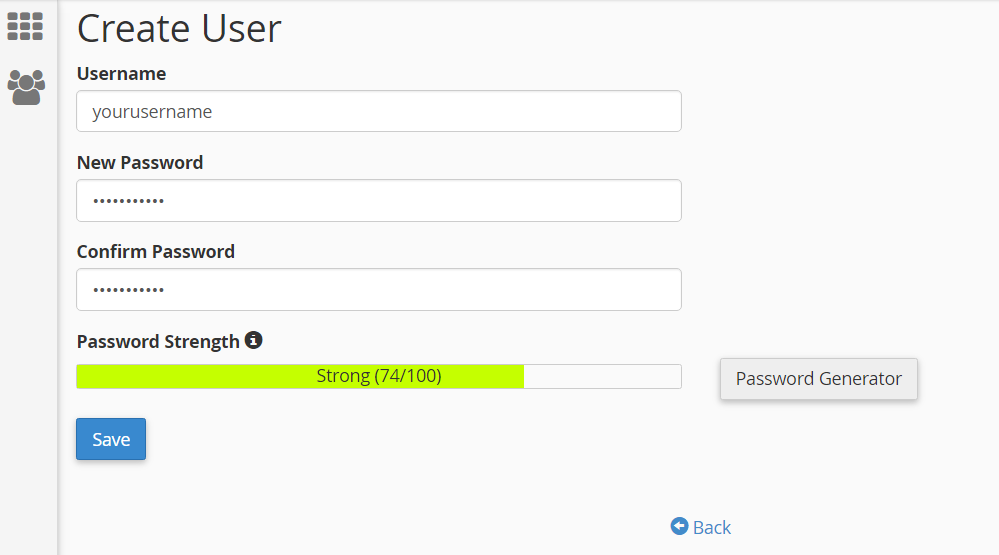This article describes how to password-protect a directory/folder on the website.
To do this please follow these steps:
- Login to cPanel.
- Click Directory Privacy in the FILES section of the cPanel home screen.

- Select a folder.

- Click on the folder name to open the Security Settings screen.

- Check the Password protect this directory box and enter the name for your protected directory.

- Click save.
- Click Create User
- Enter your username and password

- Click save.
- After finishing, you should see your username in the list of authorized users.
- Repeat the last step for any additional usernames you wish to add.
Any information or links in a password-protected folder will ask for the password again.
Note. Set a password to protect certain directories in your account. When you enable this feature, a user attempting to open a secure folder will be prompted for a username and password before they can access your content.
Looking for an outstanding cPanel-based web hosting provider? Try our web hosting packages with cPanel









